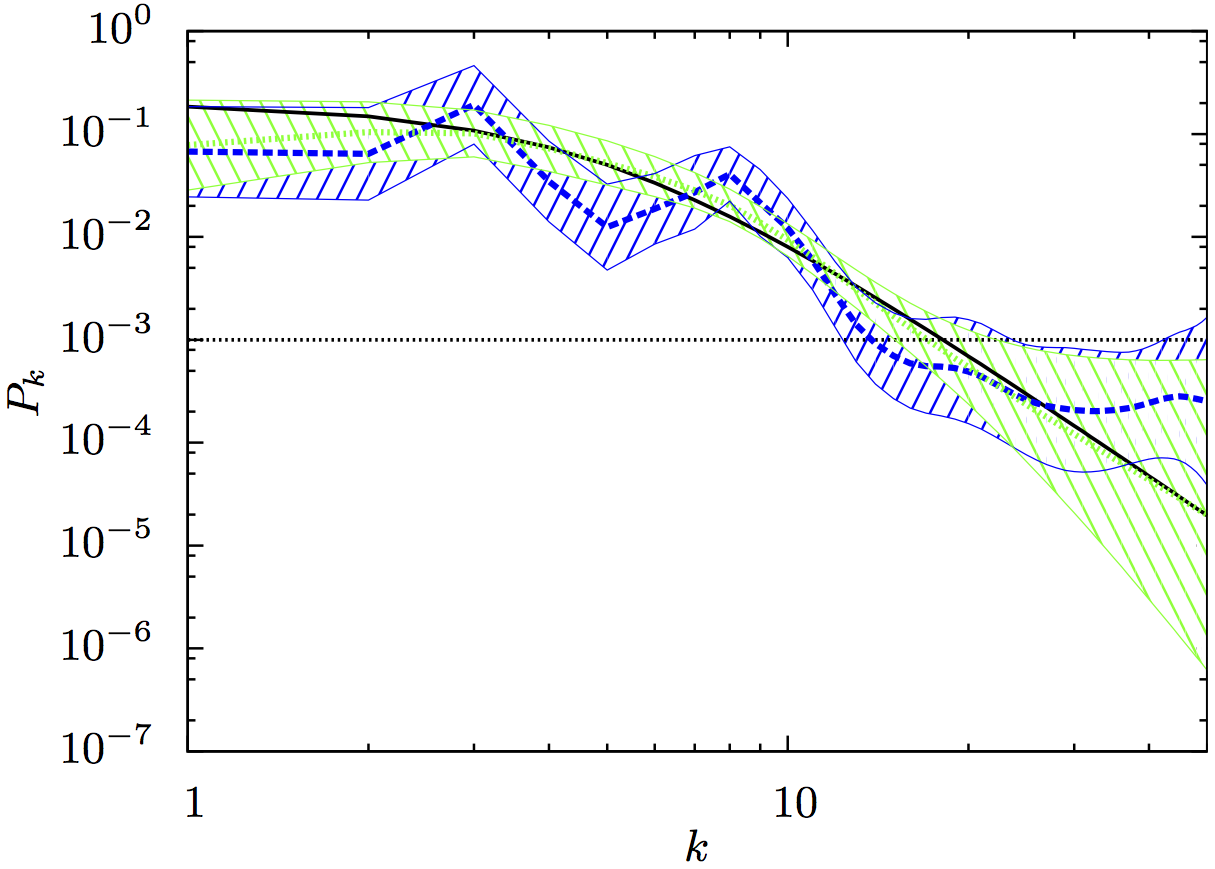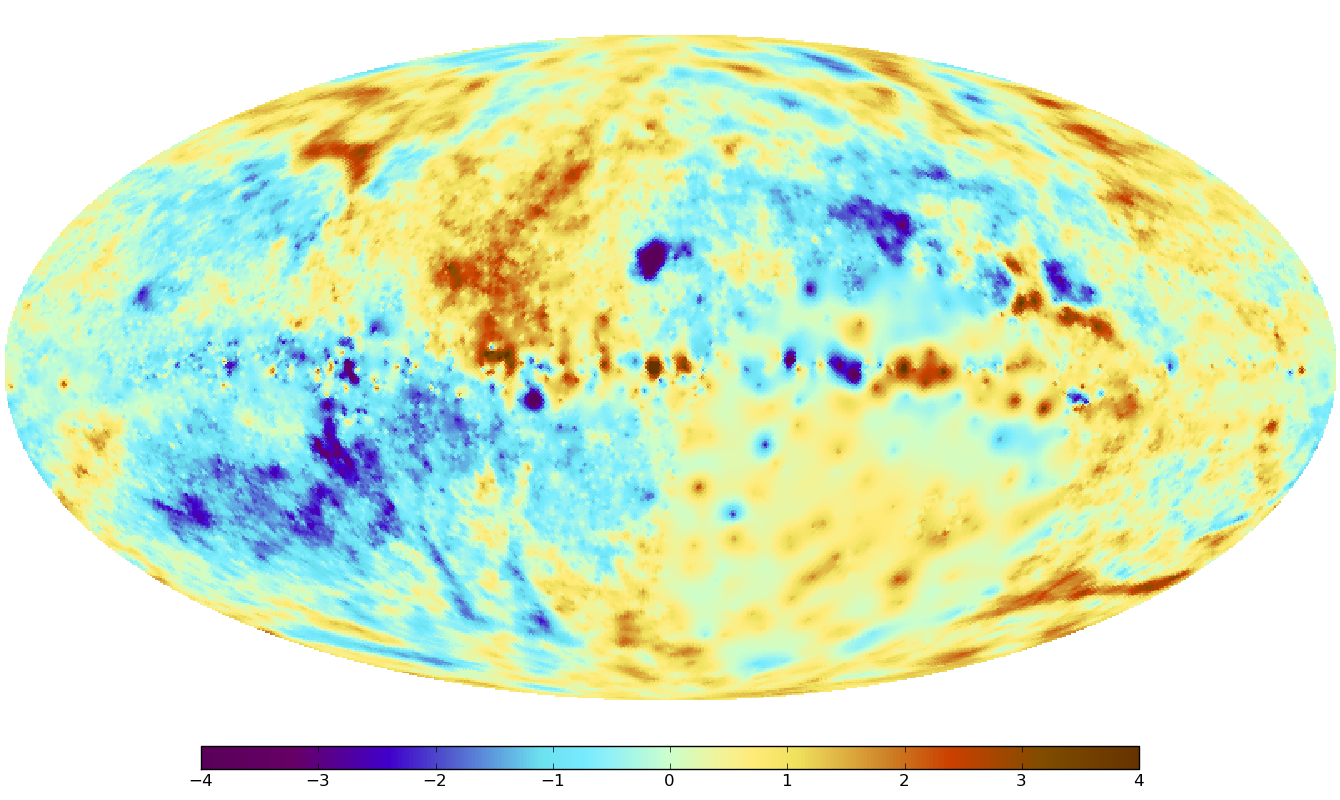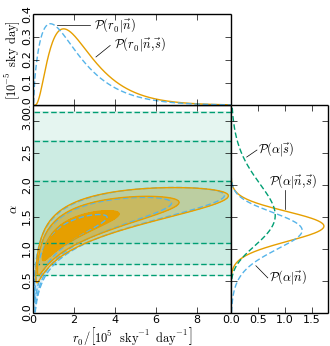Non-parametric Bayesian inference
Measurement data always consist of a finite set of numbers. Quantities in nature, however, are often continuously distributed and thus possess infinitely many degrees of freedom. To infer such continuous quantities from finite observations, we have to make use of prior information to regularize the solution. The description of the prior statistics often contains unknown parameters itself, leading to a hierarchical description of the available information.I have developed algorithms for the reconstruction of continuous quantities under the assumption of Gaussian or log-normal statistics without precise knowledge of the prior. One of my algorithms even overcomes the presence of unknown outliers in a data set.
The image shows the reconstruction of a power spectrum, describing the prior statistics of a log-normal field, making use of a spectral smoothness prior.
See, e.g., arXiv:1210.6866, arXiv:1107.2384.
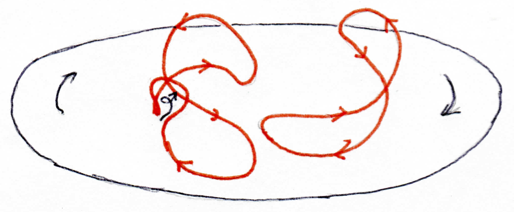
Interstellar magnetic fields
Magnetic fields in the Galactic interstellar medium show structure over a large range of scales, from coherent fields on the scale of the whole Milky Way down to (almost) the smallest scales we can resolve in observations. These magnetic fields are generally believed to be caused by a dynamo mechanism that converts the kinetic energy of turbulent gas motion into magnetic energy, aided by the rotation of the Galactic disk. The details, however, are somewhat unclear and observational constraints are sparse.I make use of measurements of radiation that has been influenced by interstellar magnetic fields, i.e., synchrotron and thermal dust emission, as well as Faraday rotation measurements, to try to constrain the properties of interstellar magnetic fields. I am especially interested in the statistical properties of the small-scale magnetic features, which may help us shed light on the underlying dynamo mechanism. One aspect I've worked on is magnetic helicity, that is, the twistiness of the magnetic field lines.
The image shows a rough sketch of the α-Ω-dynamo, a mechanism that can (maybe) explain why the Milky Way is magnetic.
See, e.g., arXiv:1008.1246, arXiv:1601.00546.

credit: ESA/Planck
CMB foregrounds
The cosmic microwave background (CMB) radiation stems from a time 400000 years after the Big Bang and has traveled to us (almost) undisturbed since then. As such, it holds information on the physical processes taking place when the Universe was very young. However, in large parts of the sky this radiation is swamped by radiation due to other effects, happening much closer to home. These are the Galactic foregrounds, synchrotron radiation, emission from dust grains, emission from scattered particles, etc. We need to separate these processes from the CMB to make use of the former for cosmology and from each other to make use of them to further our understanding of the Galactic interstellar medium. The main lever for disentangling the various foreground components is their different frequency dependence. I am working on an approach that additionally makes use of their correlations, both between components and between different locations.The image is a visualization of the measurements taken by the Planck satellite. These have been decomposed into the various physical processes, which are shown in different colors.
See, e.g., arXiv:1407.0941.
Faraday rotation
When linearly polarized radiation propagates through a magnetized Plasma, its polarization plane is rotated. This effect, known as Faraday rotation, is sensitive to one of the three components of the magnetic field and thus can be used to study magnetic fields in diffuse plasmas. However, it is also notoriously difficult to measure reliably.In our studies, my colleagues and I have assembled the largest catalog of measurements of this effect to date, based on observations of extragalactic sources. The rotation that is recorded in the catalog for these sources is due to magnetic fields within the Milky Way, magnetic fields outside of the Milky Way, and faulty measurements. We were able to separate the Milky Way's contribution from the extragalactic contributions in the presence of faulty data by developing a dedicated Bayesian statistical analysis algorithm for this problem. Now we are in the process of developing and exploring statistical models to make sense of the, much smaller, extragalactic contributions. We hope to soon be able to constrain magnetic fields on much larger, cosmological, length-scales.
The image shows our estimate of the amount of Faraday rotation due the the Milky Way's magnetic field as a function of position in the sky.
See, e.g., arXiv:1509.00747, arXiv:1404.3701, arXiv:1111.6186.
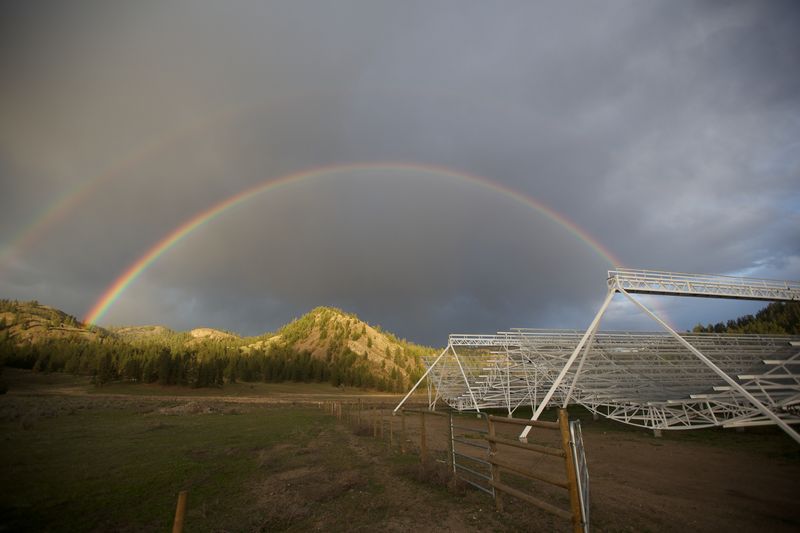
credit: Keith Vanderlinde
21cm intensity mapping
When an electron residing in the ground state of a hydrogen atom undergoes a spin flip, it emits a photon of wavelength 21cm. Since there are a lot of hydrogen atoms in the Universe, there are also a lot of these photons and we can detect this radiation even if it comes from far away. Since the wavelength of the photons undergoes a redshift as the Universe expands, we can find these photons even at longer wavelengths and by measuring their wavelength immediately know how far they have traveled. Mapping out the intensity of this type of radiation as a function of distance and position on the sky, will lead to a map of the large-scale distribution of neutral hydrogen in the Universe, and thus of matter in general, the statistics of which will yield important constraints on cosmological parameters.This radiation, however, is swamped by radiation coming from within the Milky Way, just like the cosmic microwave background (CMB) is, only more so. However, just like in the case of the CMB, these foregrounds are not only something we need to get rid of, but also something that can teach us about our own galaxy. Since the observations need to take place in the radio regime, the main foreground is synchrotron radiation, which, via its polarization and the Faraday rotation that it undergoes, holds the key for understanding many aspects of the magnetic fields that surround us.
I am involved in two projects that aim to map out the cosmological 21cm radiation. There, I am taking part in developing a pipeline that turns data into maps, in interpreting the cosmological information, in developing new tools for making maps of the foregrounds, and in interpreting those.
The image shows a view of the pathfinder telescope for the Canadian Hydrogen Intensity Mapping Experiment.
Statistics of Fast Radio Bursts
Fast Radio Bursts (FRBs) have been discovered only recently. Their name is fairly descriptive; they are fast (lasting only for about a millisecond), they appear at radio wavelengths, and they seem to happen in bursts (although that has only been established for one of them and only long after they were named). Another, perhaps the most interesting, aspect is that their radiation is highly dispersed, i.e., longer wavelengths arrive much later than shorter wavelengths. This can be explained by a large amount of ionized material between us and the sources, which led many people to believe that these sources are likely at cosmological distances.At present, only about 20 of such events have been observed. Nevertheless, there have been many claims regarding their distribution in space, time, and frequency. Many of these claims can be traced back to implicit assumptions that may or may not be justified. My colleagues at CITA and I have chimed in with some rigorously derived statistical statements.
The image shows the posterior distribution for the expected event rate around 1.4 GHz and the slope of the flux distribution.
See, e.g., arXiv:1604.03909, arXiv:1601.04051.
